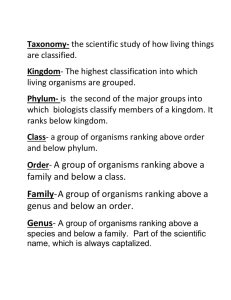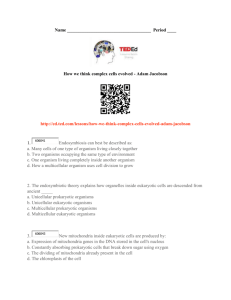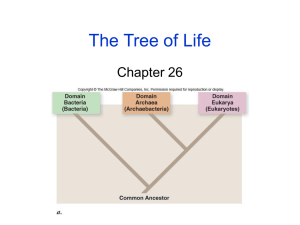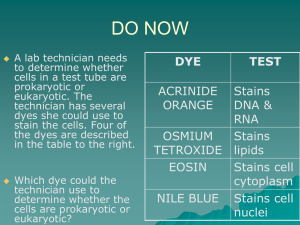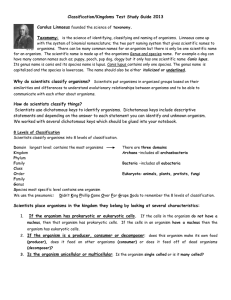Study Guide for 6 Kingdoms Quiz
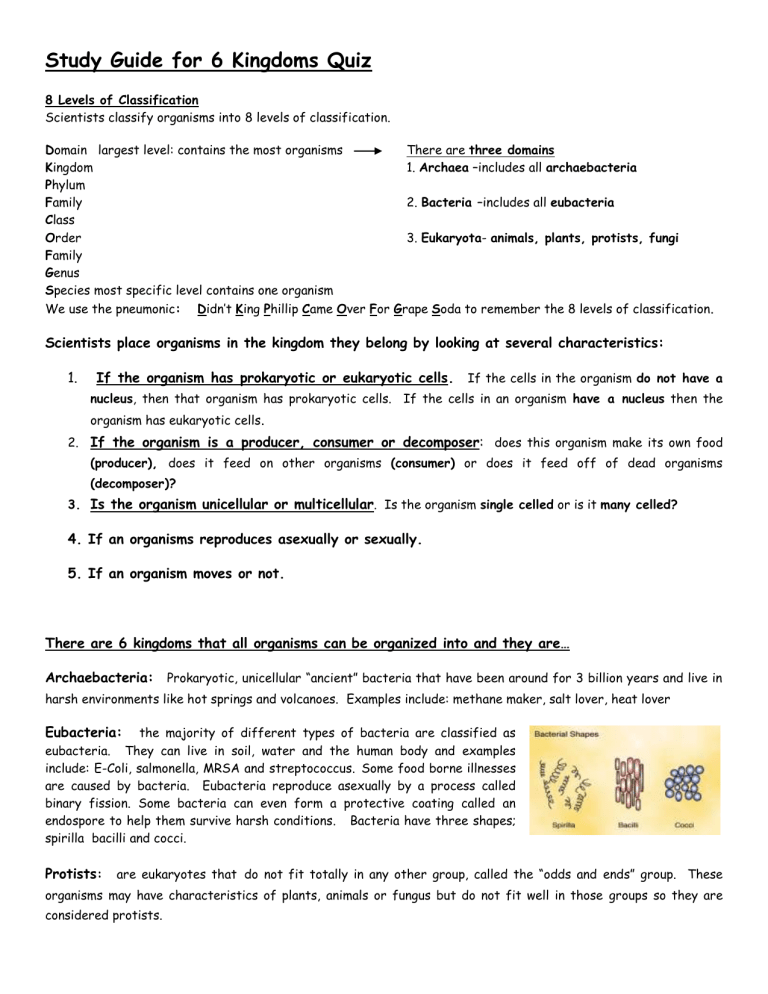
Study Guide for 6 Kingdoms Quiz
8 Levels of Classification
Scientists classify organisms into 8 levels of classification.
Domain largest level: contains the most organisms
Kingdom
Phylum
Family
Class
Order
Family
Genus
Species most specific level contains one organism
There are three domains
1. Archaea –includes all archaebacteria
2. Bacteria –includes all eubacteria
3. Eukaryota- animals, plants, protists, fungi
We use the pneumonic: Didn’t King Phillip Came Over For Grape Soda to remember the 8 levels of classification .
Scientists place organisms in the kingdom they belong by looking at several characteristics:
1.
If the organism has prokaryotic or eukaryotic cells. If the cells in the organism do not have a
2.
nucleus, then that organism has prokaryotic cells. If the cells in an organism have a nucleus then the organism has eukaryotic cells .
If the organism is a producer, consumer or decomposer: does this organism make its own food
3.
(producer), does it feed on other organisms (consumer) or does it feed off of dead organisms
(decomposer)?
Is the organism unicellular or multicellular . Is the organism single celled or is it many celled?
4. If an organisms reproduces asexually or sexually.
5. If an organism moves or not.
There are 6 kingdoms that all organisms can be organized into and they are…
Archaebacteria: Prokaryotic, unicellular “ancient” bacteria that have been around for 3 billion years and live in harsh environments like hot springs and volcanoes. Examples include: methane maker, salt lover, heat lover
Eubacteria: the majority of different types of bacteria are classified as eubacteria. They can live in soil, water and the human body and examples include: E-Coli, salmonella, MRSA and streptococcus. Some food borne illnesses are caused by bacteria. Eubacteria reproduce asexually by a process called binary fission. Some bacteria can even form a protective coating called an endospore to help them survive harsh conditions. Bacteria have three shapes; spirilla bacilli and cocci.
Protists : are eukaryotes that do not fit totally in any other group, called the “odds and ends” group. These organisms may have characteristics of plants, animals or fungus but do not fit well in those groups so they are considered protists.
Fungi: eukaryotes that are heterotrophic but are decomposers because they absorb nutrients from dead organisms and organic matter to get energy. Examples of fungi are molds, mildew and mushrooms.
Plant: Producers that use sunlight to make their own food through photosynthesis.
Animal: Consumers that eat plants and other animals for food and most move.
The characteristics of the six kingdoms:
Kingdom Prokaryotic/
Eukaryotic
Heterotrophic/
Autotrophic
Unicellular/
Multicellular
Type of
Reproduction
Move
Archaebacteria Prokaryotic either Unicellular Asexual Some
Eubacteria Prokayotic either Unicellular Asexual Some
Examples
Heat lovers
Salt lovers
E. Coli
Protists
Fungi
Plant
Animal
Eukaryotic
Eukaryotic
Eukaryotic
Eukaryotic either
Autotrophic either
Heterotrophic either
Asexual and
Sexual
Asexual and
Sexual
Multicellular Mainly
Sexual
Heterotrophic Multicellular Mainly
Sexual
Some
NO
NO
YES
Strept
Seaweed
Amoeba paramecium
Yeast
Mushroom mildew
Rose apple tree grass
Insects mammals

